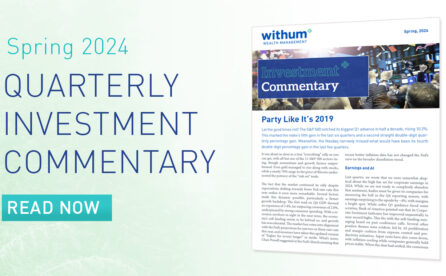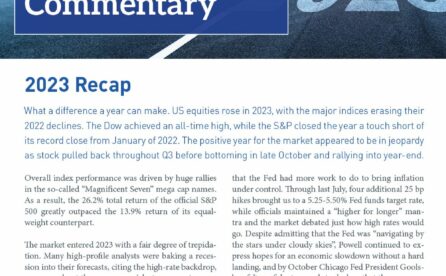July: Markets awaiting for Central Bank intervention
Much of July consisted of market participants eagerly awaiting announcements from the U.S. Federal Reserve and the European Central Bank (ECB). The main expectation was for some form of concrete action to revitalize lackluster economies in the wake of the global slowdown. Markets soared after ECB chief Mario Draghi made strong statements, including how the ECB was “ready to do whatever it takes to preserve the euro,” but unfortunately fell sharply again when the ECB failed to actually provide any strong policy support to troubled Eurozone economies. Earnings season showed corporate earnings mostly came in better than expected, though revenue was mostly light as the European crisis continued to affect many companies.
GDP: A temporary deceleration?
Second quarter real GDP growth came in at an anemic, but not surprising 1.5%, down from a revised 2.0% in the first quarter. A slowdown in consumer spending and a rise in imports were the main causes of this deceleration. While many have questioned whether the U.S. might already be in a recession, the latest GDP results do not currently reveal that. At the same time, it is difficult to argue that the U.S. economy is booming.
Employment: Improved numbers were a relief to investors
Investors breathed a huge sigh of relief as 172,000 jobs were added in July, up from a revised 73,000 jobs in June. Most of the job growth came from business services, restaurants, health care, and manufacturing while government hiring shrank by 9,000. Unfortunately, the construction industry continued to contract from poor construction hiring in the commercial sector. The unemployment rate inched upwards slightly to 8.3%.
Housing: Builder sentiment has its largest single month increase in a decade
Housing data continued to show improvements, as July builder sentiment made its largest single-month increase in a decade. June housing starts set a new recovery high after rising 29% year-over-year, and June existing home inventories remained about 20% below year-ago levels. While low inventories have started to weigh on existing home sales, which fell 5.4% from May to June, lower inventory levels also caused a dramatic rise in median prices. Morningstar economists believe that while it is unfortunate housing is improving at such a slow pace, it still has a lot of room to expand and may drive the economy even higher as exports and manufacturing begin to slow.
Manufacturing: Data points to further weakness
The purchasing manager reports in July indicated paltry gains for both U.S. and China manufacturing, while the Eurozone continued to show broad-based weakness with a 37-month low reading as European companies continued to cut employment and inventories in the face of further expected declines. More importantly, slowdowns in France and Germany suggest that further weakness lies ahead.
Auto: Sales flat for the quarter but a higher percentage of autos were sold to consumers
Auto sales were a big help for the economy in both the December 2011 quarter and the March 2012 quarter, but were essentially flat from March to June. With July’s vehicle sales of 14 million units, the auto industry continued to hold steady and will most likely not be a big help in the second half of 2012. Although sales did not accelerate, more sales were made to consumers instead of corporate fleets or rental car companies. It is worthwhile to note that consumer sales tend to occur at higher prices and are considered more indicative of economic strength.
Inflation: Drought continues
June’s CPI report showed that medical services and apparel prices increased, while overall energy and airline prices fell. Droughts in the Midwest continued, which could mean even higher corn and soybean prices that may further drive up the prices of items (such as pork and chicken) higher up the food chain. Unfortunately, this may hurt consumers, who were just beginning to get ahead of inflation.
You should not assume that any discussion or information contained in the presented material(s) serves as the receipt of, or as a substitute for, personalized investment advice from PWM. To the extent that a reader has any questions regarding the applicability of any specific issue discussed above to his/her individual situation, he/she is encouraged to consult with the professional advisor of his/her choosing. ©2012 Morningstar, Inc. All Rights Reserved. The information contained herein (1) is intended solely for informational purposes; (2) is proprietary to Morningstar and/or the content providers; (3) is not warranted to be accurate, complete, or timely; and (4) does not constitute investment advice of any kind. Neither Morningstar nor the content providers are responsible for any damages or losses arising from any use of this information. Past performance is no guarantee of future results. “Morningstar” and the Morningstar logo are registered trademarks of Morningstar, Inc. Photo Credit: fotopedia
If You Liked This Article, SHARE IT!
Help Us Spread The Word. Share This Article With Your Friends & Peers



